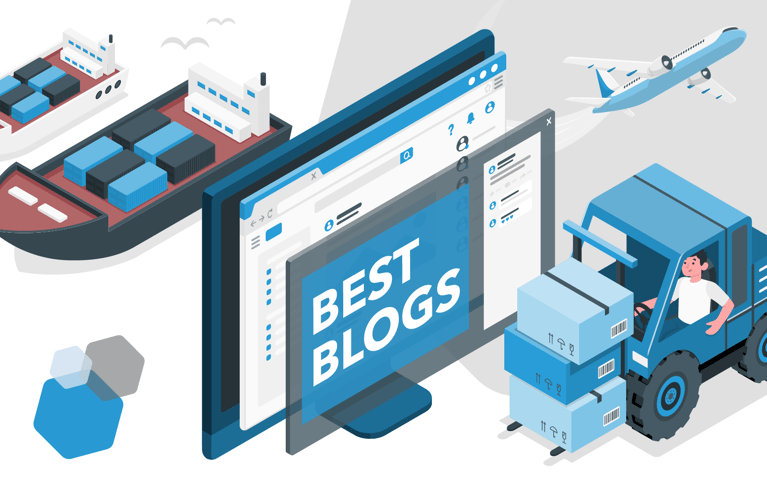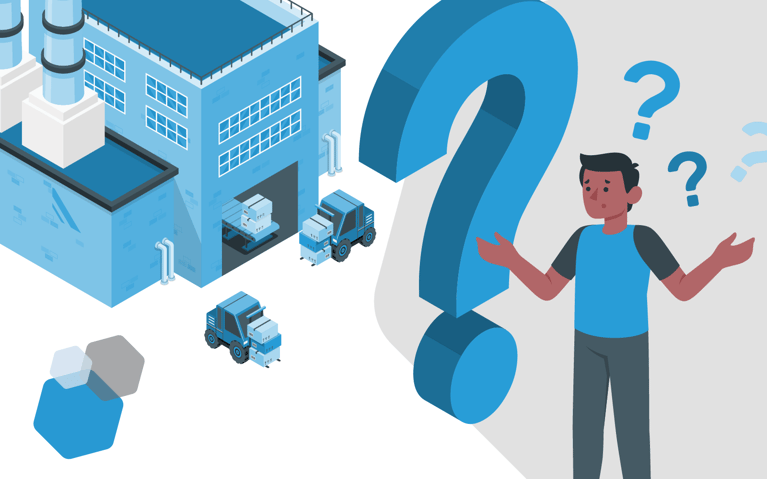A recent article posted by Supply Chain Dive highlighted an important statistic: According to a transportation management benchmark survey, 40% of shippers and logistics service providers said they are planning to invest in transportation technology to prepare for industry and regulatory changes. Although order management (36%) and visibility (32%) are still high on the list of important technology investments for the supply chain, transportation management has become the number one focus.
Transportation management is crucial for the efficient and timely movement of goods, directly impacting customer satisfaction and overall supply chain performance. It helps reduce operational costs by optimizing routes, consolidating shipments and improving fuel efficiency. Effective transportation management systems improve visibility and control over logistics operations, allowing businesses to respond swiftly to disruptions and maintain a competitive advantage.
What is transportation management technology?
Transportation management technology encompasses a range of tools and software designed to streamline and optimize the movement of goods. At its core, it aims to increase efficiency, reduce costs and improve visibility throughout the supply chain. This technology includes Transportation Management Systems (TMS), which assist in planning, executing and optimizing the physical movement of products.
Historically, transportation management relied heavily on manual processes and rudimentary software solutions. Early methods included paper-based tracking and basic spreadsheets, which were both time-consuming and prone to errors. The need for advanced solutions grew as supply chains became more complex and global. The evolution of transportation management has led to the development of sophisticated software capable of handling vast amounts of data and automating many of the processes once managed manually.
Current trends in transportation management technology reflect the industry's push toward greater efficiency and integration. Innovations such as real-time tracking, predictive analytics, dynamic rate selection and machine learning algorithms are revolutionizing the field. These advancements allow for more precise delivery estimates, proactive problem-solving and optimized routing. In addition, integrating Internet of Things (IoT) devices provides enhanced visibility and control over shipments. For instance, sensors can monitor the condition of goods in transit, ensuring they remain within specified temperature ranges.
By embracing these fulfillment technology advancements, 3PLs, brands and other logistics providers can achieve a more efficient and responsive supply chain, leading to better service and reduced costs.
What can transportation management system software do?
Transportation Management System software offers a robust suite of functionalities designed to streamline and enhance freight operations. At its core, TMS software consolidates freight operations by managing multiple carriers and transportation modes in one place. It handles freight auditing and payment, ensuring accuracy in billing and reducing administrative burdens. TMS also provides real-time shipment tracking and visibility, allowing logistics providers to monitor the status of their shipments and proactively address any issues that arise.
One of the standout features of TMS software is dynamic freight rate selection. This enables businesses to compare and select the most cost-effective shipping rates in real-time, optimizing cost savings without compromising service quality. For example, a logistics provider using TMS software can quickly identify the best shipping options for a large batch of orders, ensuring timely delivery while minimizing costs.
Consider this scenario: A mid-sized logistics provider implemented TMS software to streamline and improve its operations and gain a unified view. Prior to using TMS, the provider faced challenges with manual freight auditing, inconsistent tracking and inefficient rate selection. After integrating TMS software, the company saw significant improvements in operational efficiency, cost savings and customer satisfaction. The TMS allowed them to automate routine tasks, gain better visibility into their shipments and make more informed decisions about their freight operations. This same scenario works for brands with self-fulfillment operations.
How does a transportation management system integrate with an OMS, WMS and other retail tech stacks?
Integrating transportation management system software with an Order Management System (OMS) and Warehouse Management System (WMS) creates seamless retail logistics. A TMS integrated with an OMS ensures that shipping and delivery processes are tightly coordinated with order processing. This integration allows for real-time updates on order status and shipping details, improving accuracy and customer satisfaction. For instance, when an order is placed, the OMS can immediately communicate with the TMS to arrange the most efficient shipping option.
Similarly, integration with a WMS optimizes inventory and warehouse operations. A TMS can receive updates from the WMS about stock levels and shipment readiness, facilitating smoother outbound logistics. This synergy reduces delays and errors, ensuring that products move efficiently from the warehouse to the end customer.
The benefits of a cohesive tech stack in retail logistics are substantial. It streamlines operations, reduces manual intervention and facilitates data accuracy across all systems. This holistic approach allows retailers and 3PLs to respond quickly to market demands, optimize resource use and provide a superior customer experience.
What should brands, 3PLs and logistics providers look for in a transportation management system?
When selecting TMS software, brands, 3PLs and logistics providers should prioritize key features that can improve operational efficiency and adaptability. Scalability is critical: It means the TMS can grow with your business and handle increased volume during peak periods. Ease of integration with existing systems like OMS and WMS allow seamless data flow and operational cohesion, unifying your commerce.
User-friendliness is another important factor. A TMS should have an intuitive interface that reduces the learning curve and increases user adoption across your organization. Advanced analytics and reporting capabilities are vital for making informed decisions, identifying trends and optimizing logistics strategies. Real-time rate savings features can help you choose the most cost-effective shipping options, reducing overall transportation costs. Data – like real-time shipping savings – should be available and visible.
When evaluating TMS vendors, consider their reputation, the level of support they offer and the extent to which their solution can be customized to fit your specific needs. A vendor with a solid track record and strong customer support can significantly impact your TMS implementation's success.
Checklist for evaluating transportation management system software:
- Can the system scale with your business?
- Does it offer visibility?
- Is it easy to integrate with your current tech stack?
- How user-friendly is the interface?
- Does it provide advanced analytics and reporting tools?
- Are real-time rate savings features available?
- What is the vendor’s reputation and level of support?
- Can the TMS be customized to meet your specific requirements?
By keeping these factors in mind, you can select a TMS that meets your current needs and supports your long-term business goals.
The benefits of transportation management in omnichannel retail operations
Investing in transportation management technology offers numerous benefits for logistics providers and omnichannel retail operations. It provides significant cost savings by reducing fuel, labor and overall transportation expenses, while also enhancing efficiency through improved delivery times and reduced delays. The visibility ensures that logistics operations run smoothly and predictably. These improvements lead to higher customer satisfaction, thanks to reliable and timely deliveries, solidifying your brand's reputation and driving long-term success. Contact Cart.com today to find out more about our suite of Constellation software.
Subscribe to our emails for the latest industry insights!
By entering your email, you agree to receive marketing emails from Cart.com








